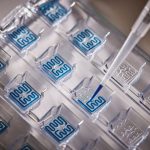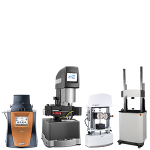Overview
TA Instruments are used in research around the world across diverse fields and applications. Our blogs share industry insights, expert ideas, and real-world discoveries made with our instrumentation. Check back frequently for new blogs with up-to-date information and inspiration.
Filter by Technique
Filter by Applications
07/23/2024
The stability of high-concentration drugs can change under storage conditions, but until now, thermal testing in the lab using traditional calorimetry methods has been time-consuming and challenging. The new TA Instruments RS-DSC fills a critical antibody formulation development gap by allowing for high-throughput short-term thermal stability testing at formulation strength concentrations. In this blog, we explore why that’s essential.
07/09/2024
Dynamic Mechanical Analysis (DMA) is a thermal analysis technique used to measure the mechanical properties of materials as they are deformed under periodic stress. DMA is commonly used to determine the viscoelastic behavior of polymers, composites, and other materials.
06/24/2024
Will my paint coat the wall or drip off? Will my topical pharmaceutical spread on skin or form clumps? Rheology answers vital questions to inform how we create and interact with materials on a daily basis.
06/10/2024
High-performance polymers are a critical material for manufacturers due to their combination of mechanical, thermal, and chemical properties, but especially their cost. Without adequate testing, manufacturers could run into a slew of issues, from immediate product failure to poor performance or failure after some time in usage.
Unlocking Stability: The Crucial Role of Thermal Analysis in Lyophilization Temperature Optimization
05/28/2024
The method of drug delivery significantly influences the final stages of the manufacturing process. Currently, lyophilization—a widely adopted technique—enables drug developers to stabilize formulations and therapeutic molecules using a validated commercial approach. In this process, precise control of pressure and temperature within a lyophilizer facilitates the removal of liquids from formulations containing thermally sensitive or hydrolytically unstable active pharmaceutical ingredients or formulation components.
05/13/2024
Against the backdrop of a plastic waste crisis, the global demand for plastic is set to quadruple by 2060. This has driven a shift toward sustainability and away from linear use models of plastic production. Post-consumer resin (PCR) has emerged as a key player in circular economy initiatives, though ensuring the quality and performance of PCR requires several characterization considerations.
04/18/2024
As a central pillar of modern society, the pharmaceutical industry bears the load of billions of lives around the world. In 2022, the global revenue of the pharmaceutical industry approximated $1.5 trillion, a figure reflected in two decades of significant growth.
03/18/2024
Lithium-ion batteries (LIB) are manufactured through a multistep process combining various active and inactive materials. Material selection and processing conditions can greatly affect the final battery performance.
03/14/2024
I love a good experiment in the kitchen, especially when it involves baking and desserts. In celebration of Pi Day, let’s take science and experiments into the kitchen with pie dough and fillings…and a rheometer.
03/11/2024
The progression from formulation development to commercial formulation is dependent on the dose strength, intrinsic stability, and extent of protein self-association in the final drug.1 This is because the drug is reaching the final stage of development.











